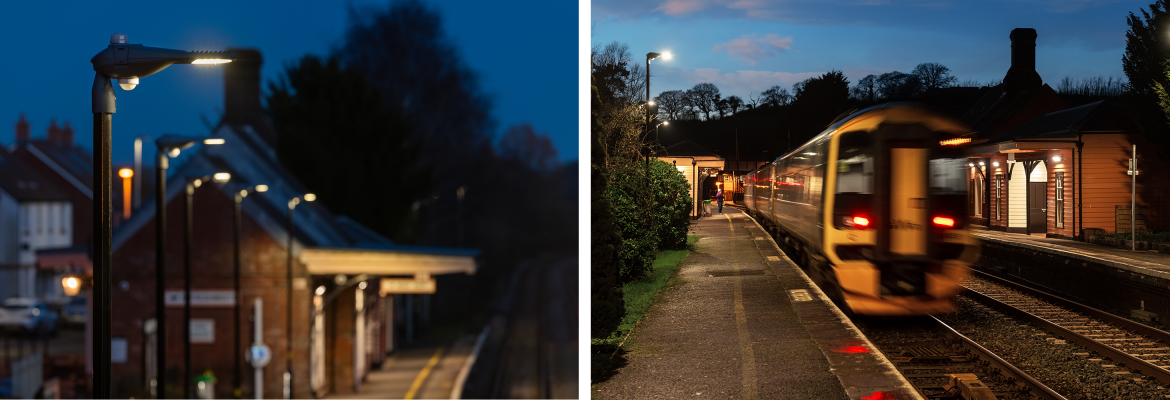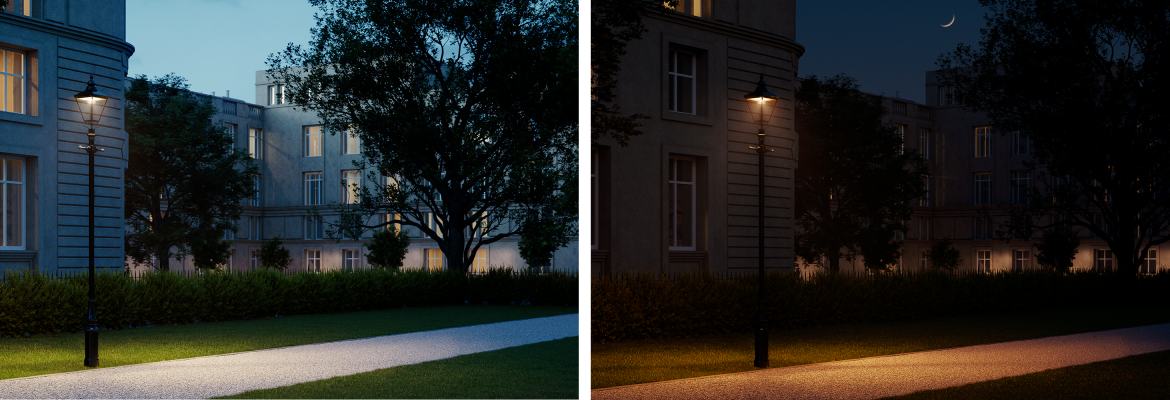Lighting and Sustainability for Rail Projects
August 2022, by David Woodcock
August 2022, by David Woodcock
KNOWLEDGE
Sustainability is as important to the rail sector as any other major industry. This includes reducing its carbon footprint, minimising waste and the environmental impact of materials used, as well as protecting wildlife and habitats. Here, David Woodcock, our Business Unit Manager – Rail, explains how the correct approach to lighting can help achieve all these aims.
The UK rail sector is aiming to be a global leader in terms of its commitment to sustainability. Network Rail was the first rail organisation in the world to set ‘ambitious science-based targets to cut carbon emissions and help limit global warming to 1.5°C’. Its ‘Environmental Sustainability Strategy 2020-2050’ also sets targets for achieving circularity in the use and management of resources as well as the protection and improvement of biodiversity.
Reducing energy use is a fundamental part of this. A simple step that can make a significant difference is upgrading all existing lighting, both trackside and throughout stations, to energy-efficient LED products. This can be enhanced further by using lighting controls and dimming profiles to minimise wasted energy during off-peak times.
|
|
|
David Woodcock, Rail Business Unit Manager Originally trained as an electrical engineer, David has over 25 years of experience within the lighting industry and has previously worked at DW Windsor in a number of key roles. As Rail Business Unit Manager, he helps to provide lighting and control-based solutions within the transportation sector. |

PIR sensors at Crediton Station dim the lighting down to 20% when no motion is detected during the night
For example, during the refurbishment of Crediton Station in Devon, we worked with SSE Enterprise Rail to implement this type of solution. Here, our Kirium Pro 1 luminaires mounted along the platform use PIR sensors to dim the lighting down to 20% when no motion is detected during the night. If movement is detected, the lighting returns to normal levels, creating a consistent but lowered level of light to comply with the relevant standards for uniformity. This delivers excellent long-term energy savings and still provides enough lighting to ensure the station appears open and welcoming to passengers while deterring any potential anti-social behaviour.
The current approach to natural resources, where products are made, used and then disposed of is not only extremely wasteful but contributes to greenhouse gas emissions. In contrast, a circular approach aims to keep materials in use for as long as possible, extract the maximum value and then recover, reuse and recycle the resources at the end of the product’s service life.
The concept of circularity in lighting has received increased attention with the release of CIBSE Technical Memorandum 66 (TM66), which provides guidance on introducing circular economy principles. LED lighting can support this as these products generally have incredibly long service lives, typically in excess of 100,000 hours for some external LED products.
The current approach to natural resources, where products are made, used and then disposed of is not only extremely wasteful but contributes to greenhouse gas emissions. In contrast, a circular approach aims to keep materials in use for as long as possible, extract the maximum value and then recover, reuse and recycle the resources at the end of the product’s service life.
However, products must also be designed to allow for simple upgrades as a critical limiting factor for the lifespan of many lighting products is technological advances that make the unit obsolete. For example, products with replaceable light engines, like those found in DW Windsor’s heritage lanterns, allow new technology to be implemented without the waste and cost of replacing the whole luminaire.
Furthermore, when considering the end of the product’s life, it is important to ensure the design and materials of a product will allow simple recycling. For example, aluminium and copper, the primary materials we use for our products, are easy to recover due to the use of mechanical fixings and can be easily recycled.
Ecology and biodiversity
There is an increasing weight of evidence that shows the potentially severe impact that poorly designed lighting can have on wildlife. For example, the effect on bats, many species of which rely on darkness for safe movement and feeding, has long been understood. However, there is a growing appreciation of the impact of poor lighting on insect species that are essential for biodiversity. Therefore, when specifying lighting solutions, it is vital to ensure minimal light trespass and, where possible, choose lighting that will lower the impact on the natural environment.

Tunable white lighting technology can adjust the colour temperature of the light to suit different times of the night
Studies have shown that lighting with higher levels of blue light can be disruptive to wildlife and humans, so specifying a warmer colour temperature where permitted, such as in car park areas, will help. In addition, tunable white products such as our Daytona luminaire can vary colour temperature throughout the night. For example, luminaires can begin illuminating at 3000K to provide better visibility during peak hours before transitioning to 2200K overnight, which is better for wildlife.
Finally, controlling light distribution is essential to eliminate light trespass. Advanced optics and carefully designed physical light shields ensure that the distribution of light can be tailored to the area that requires illumination.
Lighting within the rail sector can be complex, and this is made more challenging by the need to select the most sustainable options. This includes solutions that reduce energy usage, conform to the principles of circularity and minimise the impact on the natural world.
At DW Windsor, we have a wide range of high-performance LED lighting options suitable for rail applications. In addition, we can provide bespoke solutions and technical guidance to create a lighting scheme that meets all the requirements of rail customers, including sustainability.